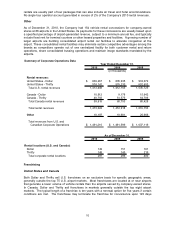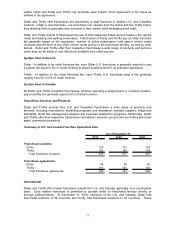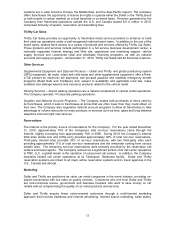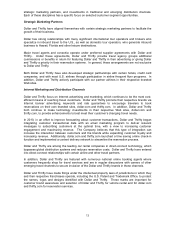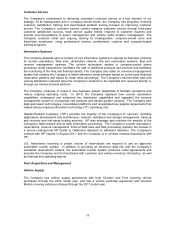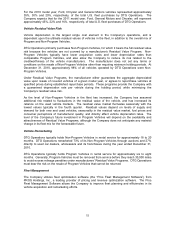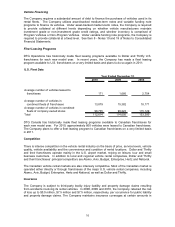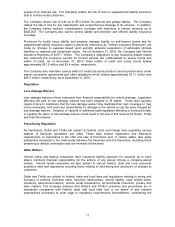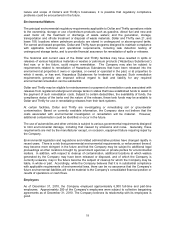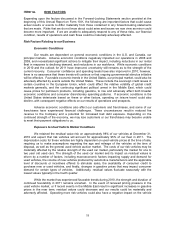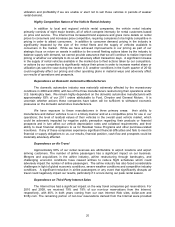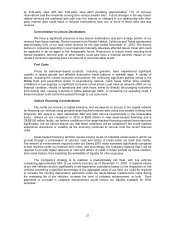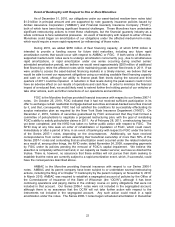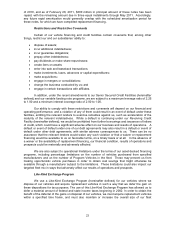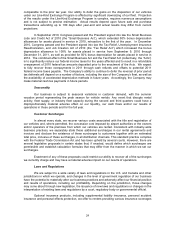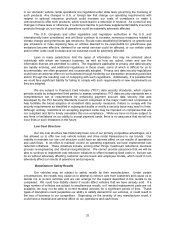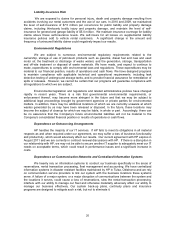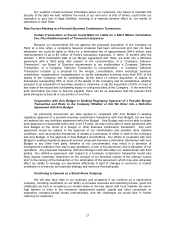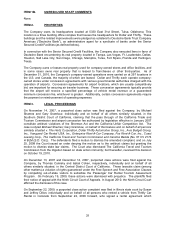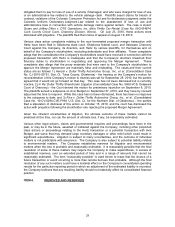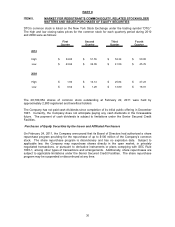Thrifty Car Rental 2010 Annual Report Download - page 21
Download and view the complete annual report
Please find page 21 of the 2010 Thrifty Car Rental annual report below. You can navigate through the pages in the report by either clicking on the pages listed below, or by using the keyword search tool below to find specific information within the annual report.utilization and profitability if we are unable or elect not to sell those vehicles in periods of weaker
rental demand.
Highly Competitive Nature of the Vehicle Rental Industry
In addition to local and regional vehicle rental companies, the vehicle rental industry
primarily consists of eight major brands, all of which compete intensely for rental customers based
on price and service. The Internet has increased brand exposure and gives more details on rental
prices to consumers and increases price competition, requiring companies to be highly competitive in
pricing in order to attract consumers. In addition to consumer demand, pricing in the industry is
significantly impacted by the size of the rental fleets and the supply of vehicles available to
consumers in the market. While we have achieved improvements in our pricing as part of our
strategic focus on return on assets in addition to the overall fleeting actions taken by the industry to
balance supply with demand, we cannot provide assurance that we will continue to realize improved
pricing or whether our attempts to do so will adversely affect transaction days. A significant increase
in the supply of rental vehicles available in the market due to fleet actions taken by our competitors,
or actions by our competitors to significantly reduce their prices in order to increase market share or
utilization (as was the case during the severe U.S. weather conditions in the fourth quarter of 2010)
could negatively affect our pricing and other operating plans in material ways and adversely affect
our results of operations and prospects.
Dependence on Domestic Automotive Manufacturers
The domestic automotive industry was materially adversely affected by the recessionary
conditions in 2008 and 2009, with two of the three manufacturers restructuring their operations under
U.S. bankruptcy laws. We remain highly dependent on the domestic automotive manufacturers with
approximately 83% of our 2011 orders attributable to Ford, Chrysler and General Motors. It is
uncertain whether actions these companies have taken will be sufficient to withstand economic
pressures on the domestic automotive manufacturers.
We have exposure to these manufacturers in three primary areas: their ability to
manufacture and deliver vehicles to us in a timely manner and at a competitive price for use in our
operations; the level of residual values of their vehicles in the overall used vehicle market, which
could be adversely impacted by negative public perception regarding their products or financial
prospects and in turn affect our vehicle depreciation costs and collateral requirements; and their
ability to meet financial obligations to us for Residual Value Programs and other purchase-related
incentives. If any of these companies experience significant financial difficulties and fails to meet its
financial or supply obligations to us, our results, financial position, cash flow and prospects could be
materially adversely affected.
Dependence on Air Travel
Approximately 90% of our rental revenues are attributable to airport locations and airport
arriving customers. The number of airline passengers has a significant impact on our business.
Mergers and acquisitions in the airline industry, airline restructuring through bankruptcy, and
challenging economic conditions have caused airlines to reduce flight schedules which could
adversely impact the number of airline passengers. The airline industry has also faced considerable
challenges in light of global economic conditions, severe weather conditions and competitive industry
conditions. A significant reduction in airline passengers or any event that significantly disrupts air
travel could negatively impact our results, particularly if it occurs during our peak rental season.
Dependence on Third-Party Internet Sales
The Internet has had a significant impact on the way travel companies get reservations. For
2010 and 2009, we received 79% and 78% of our non-tour reservations from the Internet,
respectively, with 46% in both years coming from our own Internet Web sites, dollar.com and
thrifty.com. The remaining portion of non-tour reservations derived from the Internet were provided
20


